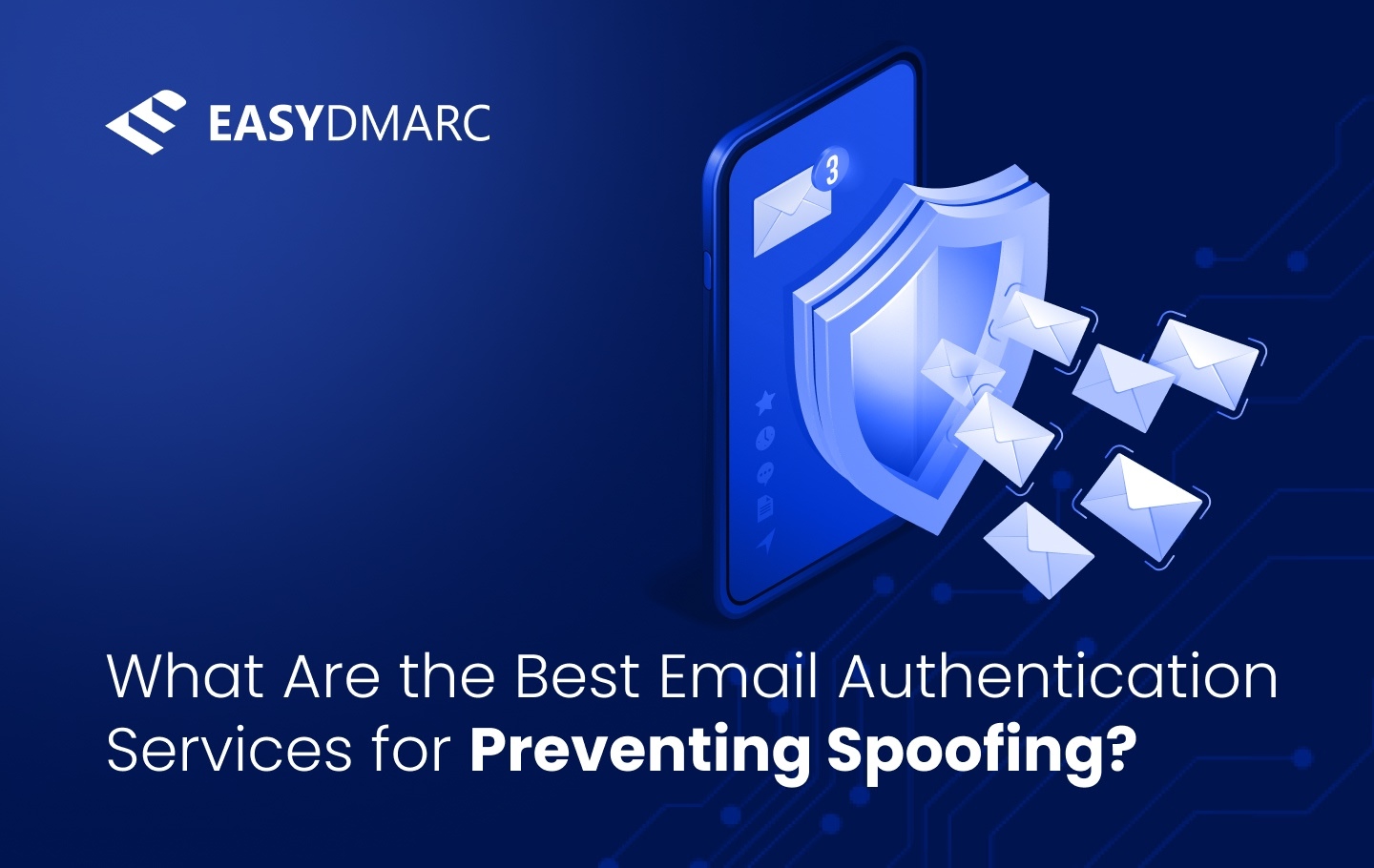Email remains one of the most powerful communication tools in business, but it’s also one of the easiest targets for cybercriminals. Attackers often disguise themselves as trusted brands or colleagues to trick people into sharing information, sending money, or clicking malicious links. This tactic, known as email spoofing, can damage your company’s reputation and expose sensitive data.
Email authentication helps stop this by verifying whether a message is authorized to send using your domain. When configured correctly, it keeps fake emails out of inboxes, protects your brand identity, and strengthens overall security.
In this article, we’ll cover how email authentication works, which features are needed for preventing spoofing, and which trusted tools can make setup and monitoring simple.
Understanding email authentication and spoofing
Email spoofing happens when attackers forge the sender’s address to make a message look like it’s coming from someone you know or trust, often your own domain. These fake emails are used to deceive recipients, steal credentials, or distribute malware. Because they appear legitimate, they can easily bypass human judgment.
This is where email authentication plays a key role. It uses SPF, DKIM, and DMARC to validate sending sources, confirming that messages are genuinely sent from approved origins. Without proper email authentication in place, anyone can imitate your domain, making your organization more vulnerable to phishing and fraud.
Features to look for in an email authentication setup
A solid email authentication setup that prevents spoofing should give you both security and clarity. If you’re just getting started or comparing tools, here are the main features to keep in mind:
- SPF, DKIM, and DMARC: These three email authentication protocols form the backbone of your protection. SPF lists which servers can send emails for your domain, DKIM adds a digital signature to prove the message hasn’t been changed, and DMARC ties everything together by setting rules for how unverified emails are handled.
- Alignment: This ensures the domain shown in the “From” header aligns with the ones used in SPF and DKIM. It’s a simple but powerful way to stop attackers from using your exact domain.
- Reporting: Regular DMARC reports show which sources are sending on your behalf and how they perform. This makes it easy to spot unauthorized senders or technical issues before they cause trouble.
- Policy Enforcement: Look for tools that let you apply your DMARC policy gradually. Start with “none” to monitor results, move to “quarantine” when things look stable, and finish with “reject” to fully block spoofed emails.
- DNS Change Controls: Since authentication depends on DNS records, any change can impact your setup. Good platforms include alerts or approval steps to prevent unwanted modifications.
- Subdomain Handling: Protection shouldn’t stop at your main domain. Make sure your tool allows flexible control over subdomains so attackers can’t exploit them.
- User-Friendly Dashboards: The best systems don’t require any technical expertise and turn complex data into simple visuals, showing you exactly what’s working and where to improve.
When these elements work together, your organization gets clear visibility, safer inboxes, and stronger control over every message sent in your name.
Top tools for email authentication setup to prevent spoofing
EasyDMARC
EasyDMARC is a unified platform that simplifies email authentication setup and DMARC management for organisations of any size. Built for teams handling multiple domains, it offers centralised control, automated policy enforcement, and clear visibility into authentication health.
The platform combines advanced threat detection with flexible reporting, white-label capabilities for MSPs and partners, and expert support from dedicated DMARC engineers. With tools such as the DMARC Report Analyzer and guided onboarding, EasyDMARC helps businesses maintain strong domain security, compliance, and consistent email deliverability.
OnDMARC
OnDMARC by Red Sift provides an accessible and automated path to implementing DMARC policies effectively. It offers clear visibility into authentication status without requiring deep technical expertise.
Automated monitoring, enforcement controls, and data-driven insights help organisations identify and resolve authentication gaps quickly. With built-in API integrations and scalable domain management, OnDMARC supports both enterprise environments and growing businesses seeking stronger email protection.
Valimail
Valimail automates the DMARC deployment process to help organisations reach enforcement faster and with fewer manual steps. It integrates smoothly with major platforms like Microsoft 365 and Google Workspace, giving security teams unified visibility across all sending domains.
Automation features handle setup, monitoring, and compliance, while interactive dashboards make it easy to interpret authentication data. Valimail is ideal for enterprises looking for a streamlined, low-maintenance approach to achieving full DMARC protection.
dmarcian
dmarcian helps organisations make DMARC adoption more transparent and manageable. It translates complex technical data into clear, actionable insights that teams can use to improve authentication and deliverability.
Intuitive dashboards, visual analytics, and detailed reporting provide a complete view of email authentication performance and potential issues. With guided onboarding and custom alerts, dmarcian supports a steady path toward full compliance and sustained domain security.
How to test your setup before enforcement
Before applying stricter DMARC rules, it’s important to make sure your authentication setup works correctly. Testing helps you catch configuration errors early and avoid blocking legitimate messages. Here’s how to do it step by step:
Verify Your DNS Records
Start by confirming that your SPF, DKIM, and DMARC records are published correctly in your DNS settings. You can use a DNS record lookup tool to check that each record is visible and valid. If any errors show up, fix them before moving forward.
Send Test Emails from All Sources
Make sure every system that sends emails on your behalf (like your CRM, newsletter platform, or ticketing tool) is properly authenticated. Run an email deliverability test to see if your messages pass SPF, DKIM, and DMARC checks. This helps identify any platforms that aren’t aligned with your domain.
Check Your Email Headers
After sending a test email, open it in your inbox and look at the raw header details. Using an email header analyzer makes this easier, because it shows whether your SPF, DKIM, and DMARC results are “pass” or “fail,” so you can quickly spot configuration issues.
Rolling out DMARC enforcement safely
Moving to full DMARC enforcement takes time and careful planning. Rushing the process can lead to delivery issues, so it’s best to roll out enforcement gradually while keeping a close eye on your reports.
Start with “none” (monitoring mode) This allows you to collect reports without affecting email delivery. During this stage, review the data to identify all the systems that send emails on your behalf and ensure each one is properly aligned with your email authentication protocols.
Use your reports to find any unauthorized or misconfigured sources. Once identified, correct their records or remove them entirely. Keep monitoring until your reports show that legitimate emails are consistently passing authentication.
When you’re confident that most of your legitimate traffic is authenticated and aligned, set your policy to “quarantine.” Suspicious or unauthenticated messages will now be delivered to the spam folder instead of reaching the inbox. Continue checking reports daily to ensure no valid emails are being caught incorrectly.
After confirming that everything works smoothly at the quarantine level, update your policy to “reject.” At this point, unauthenticated emails will be blocked completely, protecting your domain from spoofing and phishing attacks.
Keep in mind that DMARC implementation isn’t static. It evolves alongside email standards. Recent developments like the DMARCbis update to the DMARC standard introduce clearer definitions, streamlined tags, and simplified implementation guidance for organizations adopting or refining their authentication strategy. Staying informed about these updates ensures your setup remains effective, compliant, and ready for the next stage of secure communication.
How EasyDMARC helps simplify email authentication
EasyDMARC gives businesses the tools to stop spoofing before it reaches inboxes. It guides you through setting up SPF, DKIM, and DMARC records correctly so only verified servers can send emails from your domain. This closes the loopholes that attackers use to impersonate your brand and protects your reputation from phishing or fraud attempts.
Once authentication is live, EasyDMARC continuously monitors all sending sources and flags suspicious activity. Clear DMARC reports show who’s using your domain, which messages fail authentication, and where potential spoofing attempts originate. That visibility lets you act quickly, removing unauthorized senders or tightening your policies without risking legitimate mail flow.
As your setup matures, EasyDMARC automates the shift from “none” to “quarantine” and “reject,” ensuring fake emails are first isolated and then fully blocked. Real-time alerts, intuitive dashboards, and expert support keep your domain protected long-term, making ongoing spoofing prevention simple to manage for any team.
Building a trusted and secure email ecosystem
A complete email authentication setup does more than protect your inbox; it protects your reputation. When SPF, DKIM, and DMARC are configured and aligned, unauthorized use of your domain is rejected by receivers. That means fewer phishing attempts, fewer fake emails, and more trust from the people who receive your messages.
Still, email security isn’t something you finish once and forget about. New tools, services, and threats appear all the time, so it’s important to check your reports, test your setup, and update your policies regularly, just like you would maintain a healthy communication system that grows and adapts along with your organization.
If managing this sounds overwhelming, platforms like EasyDMARC are there to help. With clear setup guidance, automatic monitoring, and easy-to-read reports, they make it simple to stay secure and confident. With the right approach, keeping your emails safe becomes part of your everyday routine, not a challenge you have to face alone.
Frequently Asked Questions
There are many trusted platforms that focus on protecting domains from spoofing and phishing attacks. Tools like EasyDMARC, OnDMARC, Valimail, and dmarcian all offer solutions that combine authentication setup, monitoring, and reporting to help you secure your domain and email ecosystem.
Start by implementing SPF, DKIM, and DMARC records for your domain. These protocols verify that only approved servers can send emails on your behalf. Regularly review your reports, remove unauthorized sources, and keep your DNS records up to date to maintain strong protection.
DMARC adds a policy layer on top of SPF and DKIM. It tells receiving mail servers how to handle messages that fail authentication; whether to allow, quarantine, or reject them. This prevents attackers from sending fake emails that appear to come from your domain.
Incorrect DMARC records can lead to delivery issues or make your domain vulnerable to spoofing. Always test your setup after publishing records, and use tools that validate configurations and highlight any errors before enforcement.
To test if your email authentication is working, send test emails from all your sending sources and check the results using tools like a header analyzer or a deliverability test. These tools show whether your SPF, DKIM, and DMARC checks pass successfully, confirming that your authentication setup is in good shape.


